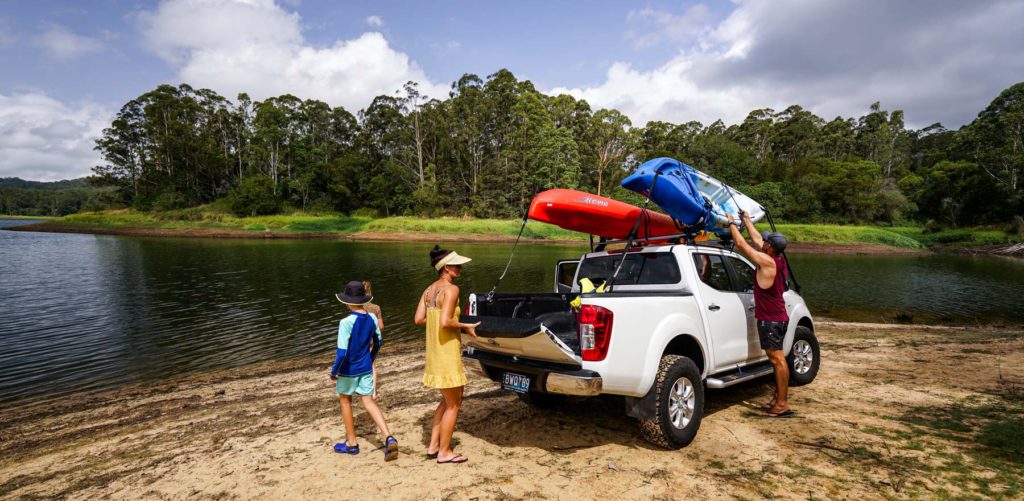
An essential component of every paddling excursion is effectively and safely transporting your kayak. Whether you’re heading to a serene lake or tackling river rapids, a reliable roof rack for kayaks ensures your equipment stays secure during travel. Because of its adaptability and simplicity of installation, the universal kayak roof rack fitting has grown in popularity among outdoor lovers. Designed to fit most vehicle types, it allows you to mount your kayak quickly without the need for special tools or permanent modifications. A durable roof rack for kayak ensures your boat stays secure even on long drives, giving paddlers peace of mind while traveling to remote lakes or coastal destinations.
Why A Universal Roof Rack Matters?
A universal kayak roof rack fitting is a must-have for paddlers who frequently transport their boats. In contrast to custom or vehicle-specific models, universal racks are designed to adapt to different roof shapes and bar sizes. This flexibility makes them ideal for drivers who use multiple vehicles or want a hassle-free setup that doesn’t require professional installation.
The system typically includes padded supports, adjustable straps, and secure tie-down points that keep your kayak stable during transit. Many models use soft cradles or foam padding to prevent scratches and damage to both the kayak and your car. By distributing weight evenly, a properly fitted rack also helps maintain balance and fuel efficiency while driving.
Preparing For Installation
Before installing your roof rack for a kayak, it’s essential to inspect your vehicle’s roof and crossbars. Make sure they’re clean, dry, and free from debris that could interfere with the fit. If your car doesn’t have built-in crossbars, you can use universal clamp systems that attach directly to the roof.
Next, unpack your rack components and check that all parts are included. Most universal kits come with adjustable brackets, straps, and padding. Reading the manufacturer’s instructions carefully ensures that each part is assembled correctly and securely.
Position the supports at an appropriate distance—typically the length of your kayak’s cockpit area—to provide even weight distribution. Once aligned, tighten all fittings and check for movement. A well-secured rack should feel firm and not wobble when lightly shaken.
Adding The Right Kayak Accessories
Although transport is made possible by a roof rack, having the appropriate kayak accessories improves ease and safety. Ratchet straps and bow-stern tie-downs are essential to prevent shifting during transit. Always use high-quality, weather-resistant straps that won’t stretch or fray over time.
Foam blocks or rubber pads between your kayak and roof rack provide extra cushioning, reducing the risk of scratches or dents. It’s also wise to invest in a cockpit cover to keep rain, dust, and insects out during travel.
Other useful accessories include load-assist tools that make it easier to lift heavy kayaks onto your car, especially if you’re paddling solo. These devices use rolling or sliding mechanisms that help you position the kayak without straining. By combining your roof rack with practical accessories, you’ll enjoy smoother, safer transport wherever your journey takes you.
Choosing The Right Kayak For Transport
If you’re still searching for your perfect vessel, a single kayak for sale is often the best option for beginners or solo paddlers. Single kayaks are lighter and easier to handle than tandem models, making them ideal for quick trips or solo adventures. Their compact size also makes them easier to load onto a universal roof rack, reducing the need for assistance.
When selecting a kayak, consider its weight, shape, and material. Lighter materials like polyethene or composite blends are easier to lift and secure, while shorter models are more manageable for transport and storage. The combination of a lightweight kayak and a dependable universal rack makes travel effortless, even for first-time kayakers.
Maintenance And Safety Tips
Once installed, it’s important to perform routine checks on your universal kayak rack. Examine straps and fasteners regularly for wear and tear, and tighten them before each trip. After long journeys, inspect the roof and rack for signs of friction or movement.
When loading your kayak, centre it on the rack to maintain balance, and double-check that all straps are properly tightened. Avoid excessive pressure, as overtightening can damage your kayak’s hull. For longer drives, make periodic stops to ensure your equipment remains secure.
Final Thoughts
Installing a universal kayak roof rack fitting is one of the smartest investments a paddler can make. With a sturdy roof rack for a kayak, essential kayak accessories, and a lightweight single kayak for sale, you’ll be fully equipped for safe and convenient travel. Regular kayaking trips become far more enjoyable and stress-free when your gear is securely transported, allowing you to focus on the thrill of the water rather than worrying about your equipment.